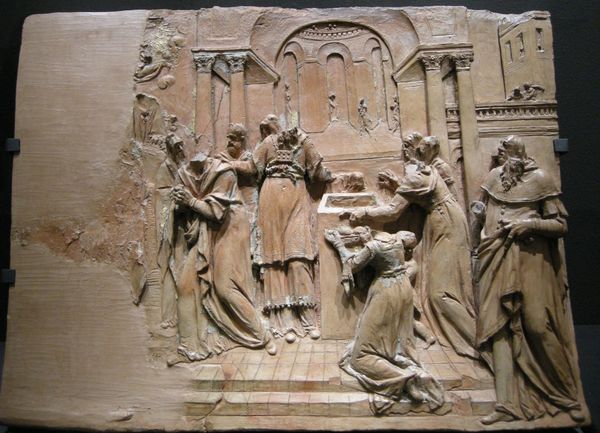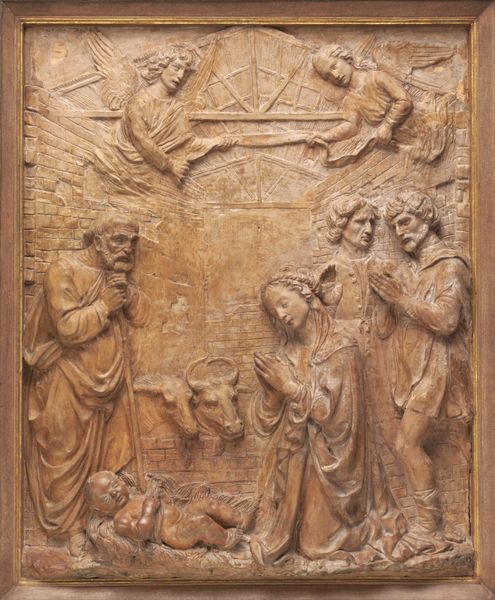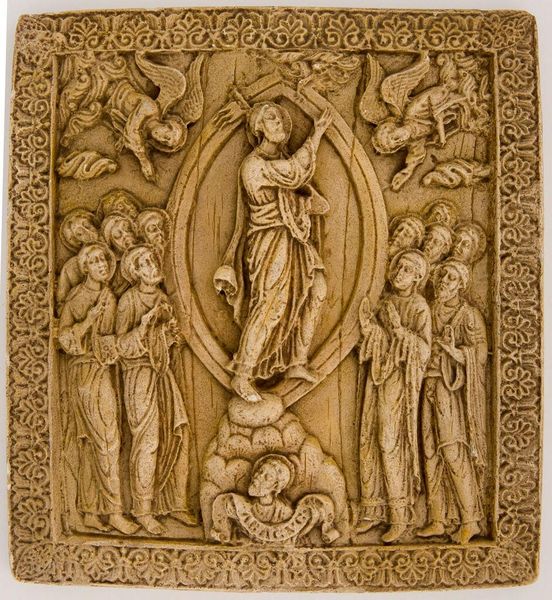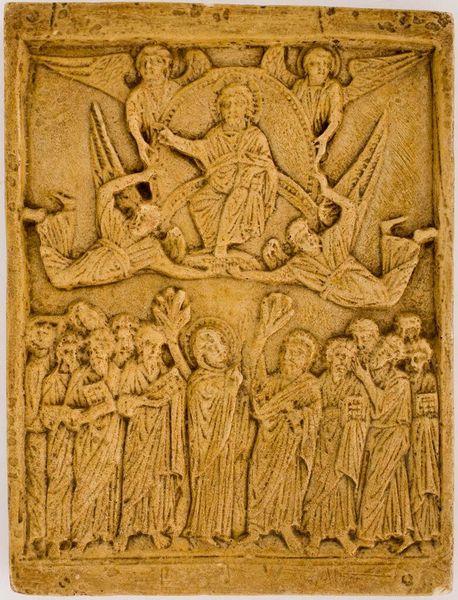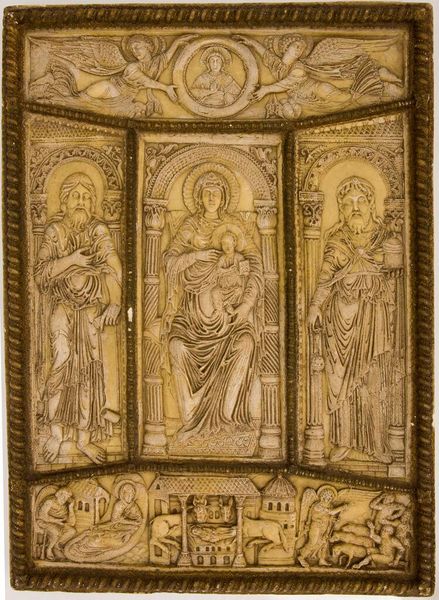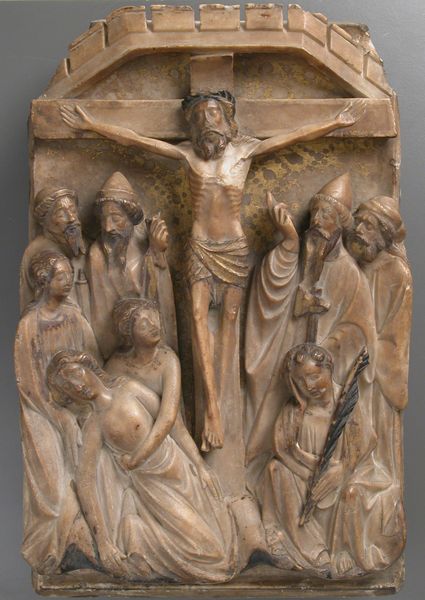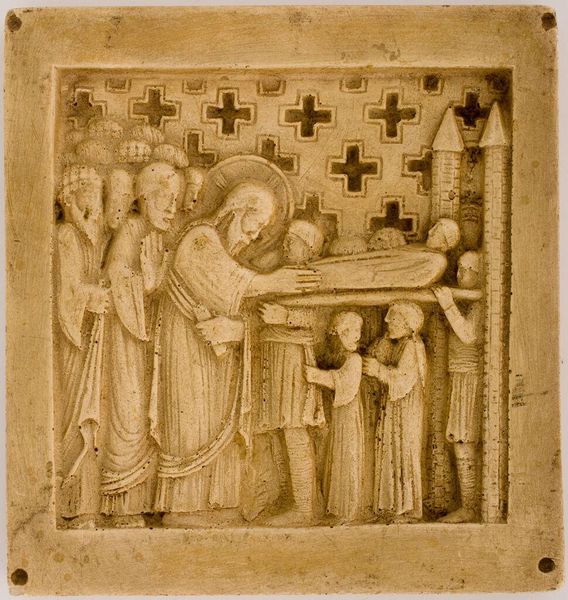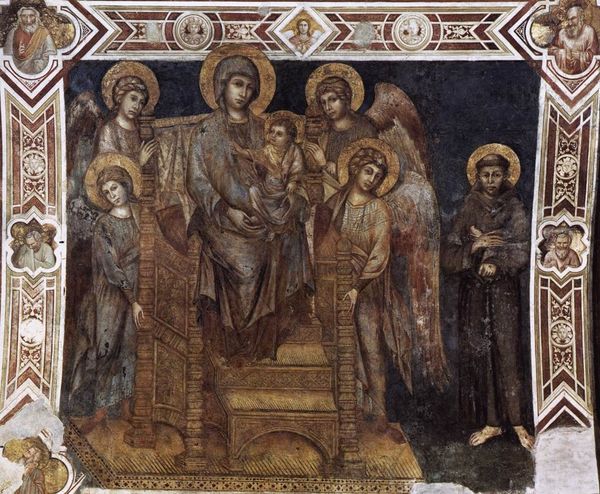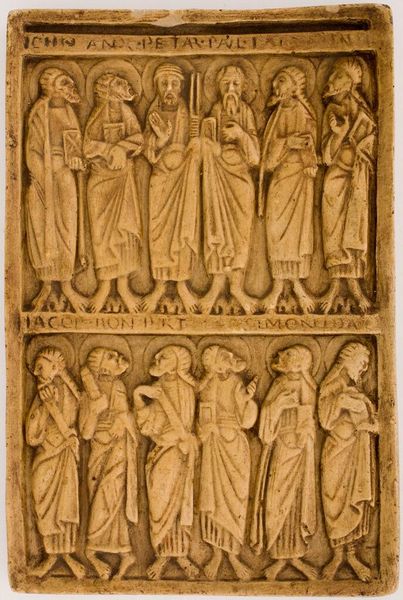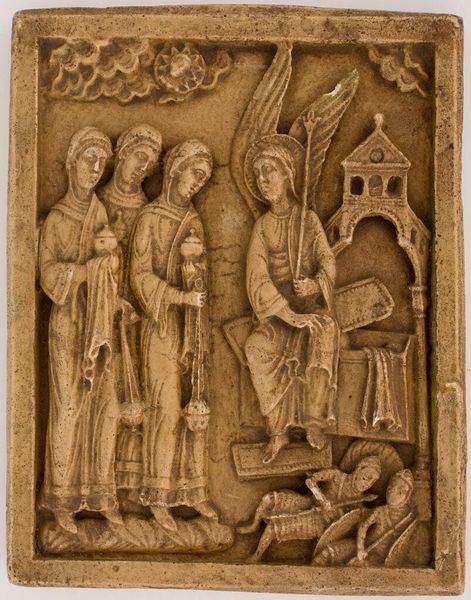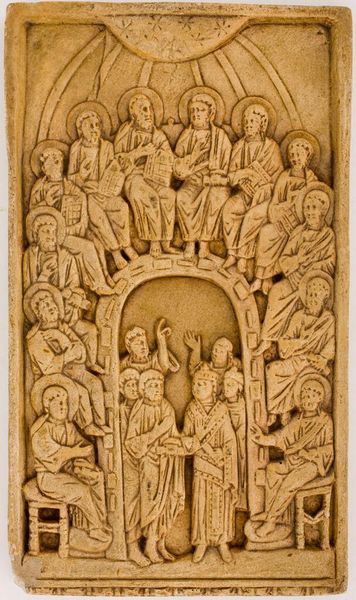
metal, relief, sculpture
#
byzantine-art
#
metal
#
sculpture
#
relief
#
figuration
#
sculpture
#
history-painting
Copyright: Orthodox Icons,Fair Use
Editor: Here we have "Virgin of Chuguev," an Orthodox icon dating back to 1900. It appears to be a metal relief sculpture. I'm struck by how the artist created depth using the varying levels of relief, almost like a three-dimensional painting. What stands out to you? Curator: Observe how the artist has meticulously organized the composition into distinct registers. The horizontal plane defined by the Virgin's recumbent figure grounds the scene, creating a sense of earthly mourning. Above, notice the ethereal rendering of Christ, bathed in light and seemingly ascending. Editor: Yes, the light emanating from Christ definitely draws your eye upward! But the figures surrounding the Virgin seem quite static. Curator: Consider, though, how the rigid, almost geometric drapery of the surrounding figures serves to heighten the emotional intensity of the central event. It's not merely static; it's formalized grief, expressed through pattern and line. The deliberate flattening of space also directs our attention to the symbolic content. The absence of realistic depth emphasizes the divine nature of the subject matter. How might this relate to earlier Byzantine examples? Editor: I see your point. By minimizing depth and focusing on lines and the expressions, the work pulls the viewer towards the most important parts and the symbolism. Thanks for sharing your analysis! Curator: And thank you for bringing this piece into focus! Examining its formal elements has shed light on the complex interplay between grief, faith, and artistic expression.
Comments
No comments
Be the first to comment and join the conversation on the ultimate creative platform.
